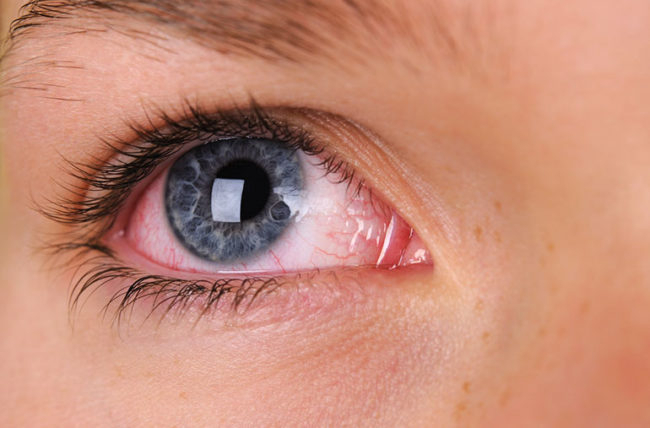We now know that human-to-human transmission of coronavirus occurs mainly through respiratory droplets, when it enters our nose, mouth and eyes. A COVID-19 case study shows that virus particles were detected replicating virus even after getting cleared. This could show how the virus spreads from tears.
According to a case report in Annals of Internal Medicine, Italy's first confirmed coronavirus patient was detected with significant level of infectious virus particles in her eyes, even long time after the infection cleared from her nose.

A woman of 65 flew from China's Wuhan to Italy on January 23. After five days she experienced COVID-19 symptoms and got admitted to the hospital the next day. Her symptoms included dry cough, sore throat, mucous membrane inflammation in the nose (called coryza), and also pink eye (called conjunctivitis), as per a report.
She was positive for novel coronavirus. At the hospital, medical professionals took an eye swab and found the RNA of SARS-CoV-2 in her eyes, on the third day. The eye swabs (called ocular swabs) were taken daily. Even after her pink eye (conjunctivitis) got cleared on day 20 the test found that the virus lingered up to day 21, says the report.
Virus replicates in the eyes

But that's not all; the coronavirus was undetected in both the nose and the eyes for some days. However, on day 27, the researchers not only detected the virus once again in her eyes, but further found that virus sample from the eyes was 'replicating'.
"We found that ocular fluids from SARS-CoV-2-infected patients may contain infectious virus, and hence may be a potential source of infection," wrote the authors.
Importance
The new finding highlighted the importance of control measures, like avoiding touching of nose, mouth, and eyes including frequent hand washing, as per the report. This cautions ophthalmologists (eye specialists) during their clinical tests that the eyes could both act as an entrance and a source of spreading of the coronavirus. "measures to prevent transmission via this route must be implemented as early as possible," the authors wrote.
It was already known that pink eye was a possible symptom of COVID-19. This case report suggests that the eyes can be a source of infection and also a replication of the novel coronavirus. The case calls for more research on the infectiousness of virus in the eyes is needed. A previous report on why blood vessel lining gets inflamed among coronavirus patients was also published.









